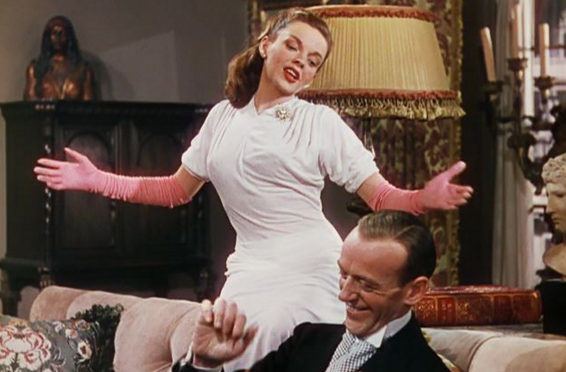Maybe it has to do with the heightened religious nature of Easter, and that it isn’t a holiday where anyone other than those in the preadolescent category seem to get a present. Or maybe there are so few Easter movies simply because it’s too difficult to set a narrative other than the horror genre variety against it. Sure, there are a handful of movies where Easter might be happening around the time of certain plot points (e.g. Rebel Without A Cause and Mallrats), but none have ever so unabashedly made the celebration a central part of the story. Whatever the case, Charles Walters’ 1948 film, Easter Parade, starring Judy Garland and Bing Crosby, remains the sole high-brow pop culture offering we have for getting into the Easter spirit.
Opening on Broadway star Don Hewes (Crosby), an arrogant type who can’t believe it when his dancing partner/love interest, Nadine Hale (Ann Miller), informs him that she wants to break out on her own–much to the chagrin of his ego–Easter Parade is very much a New York love story (and only in New York is there the Fifth Avenue Easter parade). To make matters worse, when Don’s best friend, Johnny (Peter Lawford), comes into the picture, it’s pretty clear that Nadine is in love with him, though Johnny rebuffs her advances–knowing full well that Don has feelings for her. In his rage over Nadine’s lack of reciprocation, he relents to letting her go, insisting he can find another partner even better than her.
It is while drowning his sorrows at a bar that Hannah Brown (Judy Garland) catches his eye in the midst of performing a dance number on stage. He plucks her from the other dancers to invite him into his show, where he conditions and trains her to act just the way Nadine did. But Hannah being Hannah (and Judy Garland being Judy Garland), it’s evident that she’s better off being herself: a true original. Unfortunately, Don can’t see this for himself until others in his inner circle inform him that he’s essentially a laughing stock for trying to remake Hannah in Nadine’s image. It is from this point forward that he gives Hannah the leeway to be the type of performer with her own personality and distinctiveness. In the meantime, however, the cruel and inexplicable ways of attraction are misplaced once again when Johnny expresses interest in Hannah, who makes it clear to him that her affection is only for Don.
Building up to the big Easter parade, so too, does Hannah’s contempt when she realizes that Don was in love with Nadine and essentially used her as a replacement to distract himself and to prove that, when he’s involved, he can transform any ingenue into a star. Hurt by his actions, Hannah is all too willing to cast Don out of her life. Johnny is the one who encourages Hannah to forgive and to allow their love to be resurrected in the wake of the argument over Nadine and the jealousy she instilled. In this sense, Easter Parade provides quite the understated Easter-oriented message, with a slew of the most memorable songs and choreography in cinema history to highlight the finale during which they walk together in the parade to celebrate the holiday in their most flamboyant garb. Come to think of it, maybe there will never be another “Easter movie” because nothing else can ever compare to the spectacle of this one.






















